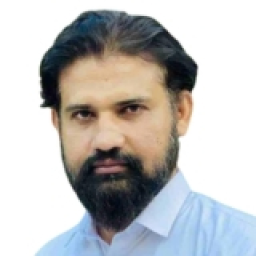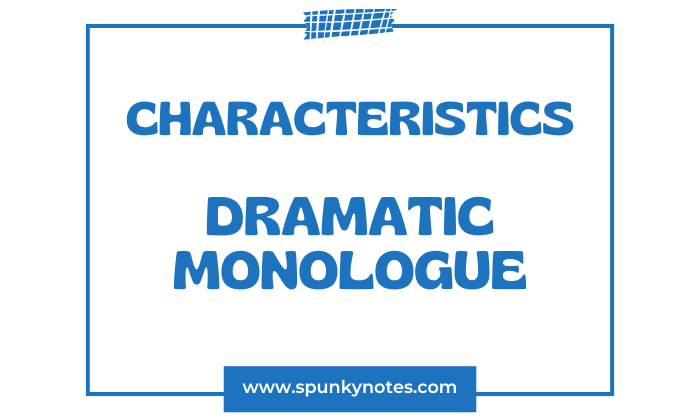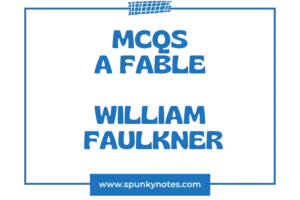

Estimated Reading Time: 6 min
Q. What are the characteristics of dramatic monologue?
Q. What is the difference between monologue and dramatic monologue?
Monologue
A monologue is a speech delivered by one character in a play, movie, or other performance, or in literature, where the character expresses their thoughts aloud.
Monologues can be directed either towards other characters, themselves, or the audience. The purpose of a monologue can vary, from providing insight into the character’s thoughts and emotions to advancing the plot.
Dramatic Monologue
A dramatic monologue, on the other hand, is a specific type of monologue found typically in poetry but also in prose and drama. It involves a single character, who is not the writer, speaking to a silent audience.
The character reveals aspects of their personality while describing a particular situation or series of events. The focus of a dramatic monologue is more on the character’s personal views and experiences and less on advancing the storyline.
Differences Between Monologue and Dramatic Monologue
1. Definition
A Monologue is a long speech by one character in various forms of media or literature, used to express thoughts or narrate events.
A Dramatic Monologue is a specific type of poetic speech in which a single character, who is not the author, speaks to a silent audience.
2. Context of Use
Monologues are used in plays, films, and other narrative forms to develop the plot and explore characters.
Dramatic Monologues are primarily found in poetry, focusing more on revealing the speaker’s psychological state than on advancing the plot.
3. Audience Interaction
In a Monologue, the speech may be directed at other characters, the audience, or the speaker.
In a Dramatic Monologue, the speech is aimed at a specific, though often not physically present, listener within the context of the poem.
4. Purpose
The purpose of a Monologue is to advance the plot, reveal character traits, or provide background information.
The purpose of a Dramatic Monologue is to deeply explore the speaker’s feelings and thoughts, revealing their viewpoints.
5. Character Revelation
Monologues may reveal character traits and conflicts, but not always in depth.
Dramatic Monologues are intensely focused on uncovering deep personal traits, conflicts, or motivations of the speaker.
6. Literary Focus
Monologues are flexible, serving multiple narrative purposes including describing actions, thinking processes, or engaging the audience directly.
Dramatic Monologues are sharply focused on analyzing a character through their speech, with less emphasis placed on actions or external narrative events.
Characteristics of Dramatic Monologues
A dramatic monologue, as a distinct literary form, primarily found in poetry, possesses several defining characteristics:
- Single Speaker
- Silent Audience
- Insight into the Speaker’s Mind
- Psychological Portrait
- Implicit Narrative
- Dramatic Context
- Language and Style
- Irony
1- Single Speaker
Unlike a dialogue, a dramatic monologue involves a single person speaking. The speaker is not the author but a fictional or historical character.
2- Silent Audience
The speaker addresses a listener or listeners who do not speak within the context of the poem. These listeners are often part of the dramatic setting but remain silent, influencing the monologue by their presence and presumed reactions.
3- Insight into the Speaker’s Mind
The monologue provides a deep insight into the personal thoughts, feelings, and motivations of the speaker. It often reveals more about the speaker’s character than they intend to show.
4- Psychological Portrait
Through the speaker’s words, the audience receives a detailed psychological portrait of the speaker, including their personal conflicts, desires, fears, or moral dilemmas.
5- Implicit Narrative
The speaker’s words often tell an underlying story while focusing mainly on their thoughts and emotions. The context or situation surrounding the monologue gradually unfolds, adding depth to the narrative.
6- Dramatic Context
The monologue takes place in a specific situation or moment that holds significant consequences for the speaker. This setting enhances the dramatic tension and often leads to a self-revelation or pivotal decision.
7- Language and Style
The language of a dramatic monologue is carefully crafted to suit the speaker’s personality and social context. It often employs persuasive, expressive, or poetic language to convey the complexities of the speaker’s thoughts.
8- Irony
Dramatic monologues frequently use irony, where the speaker says one thing but the audience understands a deeper, often contradictory meaning.
10 Famous Dramatic Monologues
1- Porphyria’s Lover by Robert Browning (1836)
In this dark monologue, the speaker recounts the night he murdered Porphyria, his lover, to preserve a perfect moment forever. The poem explores deep themes of love, power, and madness, offering insight into the complexities of the speaker’s mind.
2- Ulysses by Alfred Lord Tennyson (1842)
Ulysses, the legendary hero, speaks of his dissatisfaction with his stagnant life and his desire to continue seeking adventure despite his old age. Tennyson portrays Ulysses’ unyielding quest for knowledge and his deep longing for the sea and exploration.
3- My Last Duchess by Robert Browning (1842)
This poem features the Duke of Ferrara who, while showing a portrait of his deceased wife, inadvertently reveals his tyrannical and possessive nature. The Duke’s speech to an emissary about his last Duchess exposes his cruel disposition and the likely dark fate of his wife.
4- Soliloquy of the Spanish Cloister by Robert Browning (1842)
The monologue captures the envious and spiteful thoughts of a Spanish monk secretly harboring hatred for a fellow monk. Browning explores themes of religious hypocrisy and personal malice hidden beneath a facade of piety.
5- The Bishop Orders His Tomb at Saint Praxed’s Church by Robert Browning (1845)
A corrupt and worldly bishop on his deathbed instructs his sons to build an elaborate tomb for him. The monologue exposes his earthly vanities, his dubious spiritual beliefs, and his manipulative nature.
6- Fra Lippo Lippi by Robert Browning (1855)
The Renaissance painter Fra Lippo Lippi explains to the city guards who caught him wandering at night about his views on art and life. The poem discusses the conflict between artistic freedom and clerical expectations.
7- The Love Song of J. Alfred Prufrock by T.S. Eliot (1915)
J. Alfred Prufrock, a man bewildered by indecision and self-doubt, invites the reader into his fractured psyche. He agonizes over his social actions and existential paralysis in a modern world, illustrating his alienation and fear of judgment.
8- A Monologue of the Whole of the Universe by Wallace Stevens (1954)
This poem offers a complex meditation on the nature of reality and existence, speaking from a perspective that encompasses the entire universe. Stevens uses the monologue to ponder the abstract and philosophical through rich, symbolic language.
9- Lady Lazarus” by Sylvia Plath (1965)
Sylvia Plath crafts a dark and ironic piece spoken by a woman who has attempted suicide multiple times. She compares herself to Lazarus, rising repeatedly from death, and confronts the voyeuristic curiosity of the public and her defiance against mortality.
10- Ellen West” by Frank Bidart (1977)
Through the voice of Ellen West, who struggled with eating disorders and identity issues, Bidart explores themes of body image, personal torment, and the search for identity in a poignant and personal narrative.


